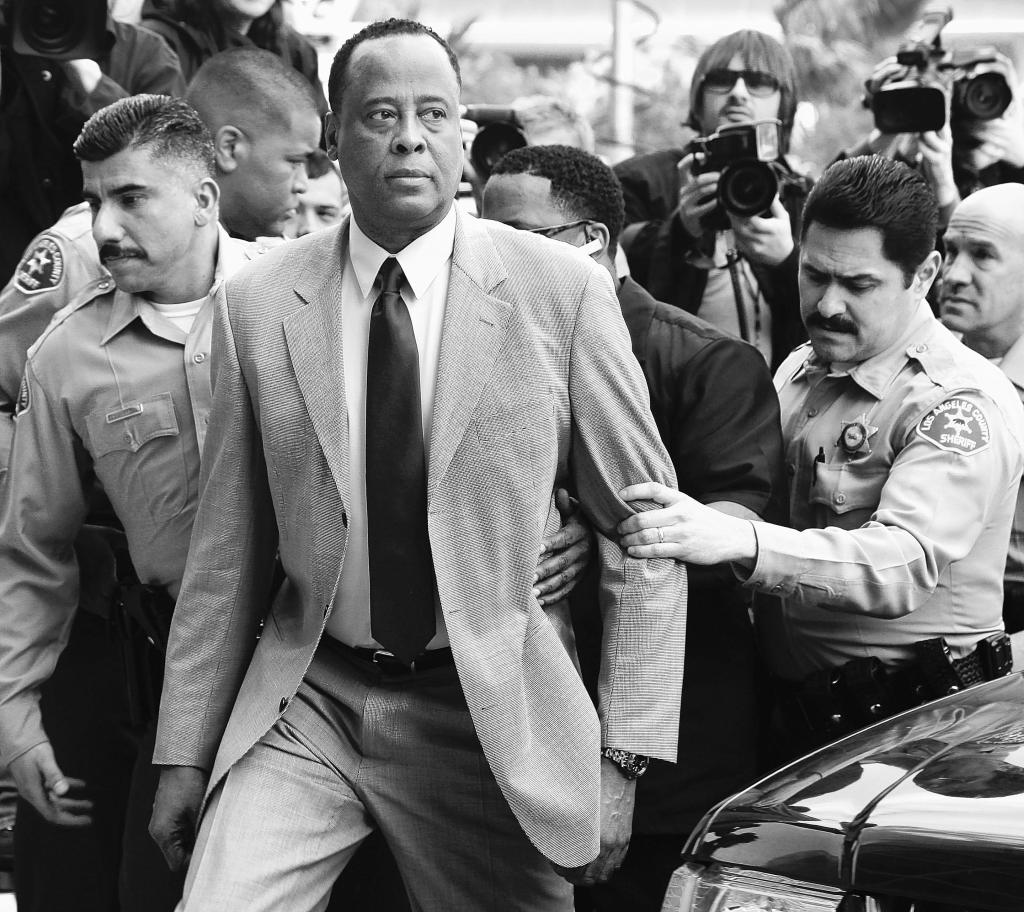LOS ANGELES – Michael Jackson’s doctor halted CPR on the dying pop star and briefly delayed calling paramedics so he could collect drug vials at the scene, according to documents obtained by The Associated Press that shed new light on the singer’s chaotic final moments.
The suggestion that Dr. Conrad Murray may have tried to hide evidence is likely to be a focus as prosecutors move ahead with their involuntary manslaughter case against him.
The account was given to investigators by Alberto Alvarez, Jackson’s logistics director, who was summoned to the stricken star’s side as he was dying on June 25. The AP also obtained statements of two other Jackson employees who were at the house.
Alvarez told investigators that he rushed to Jackson’s room and saw the star lying in his bed, an IV attached to his leg. Jackson’s mouth was agape, eyes open and there was no sign of life. Murray worked frantically, at one point performing mouth-to-mouth resuscitation while Alvarez took over CPR.
Two of the star’s children, Prince and Paris, came in the room and cried as they saw Murray trying to save their father. A nanny was called to usher them away and they were taken to wait outside in a vehicle.
The documents also detail an odd encounter with Murray after Jackson was declared dead at a nearby hospital. Murray insisted he needed to return to the mansion to get cream that Jackson had “so the world wouldn’t find out about it,” according to the statements, which provide no elaboration.
Murray’s lawyer, Ed Chernoff, rejected the notion his client tried to hide drugs. Alvarez and the others who gave the statements, Jackson’s personal assistant Michael Amir Williams and driver/bodyguard Faheem Muhammad, could be key witnesses should Murray go to trial. Except for the brief appearances by the nanny and the children, Alvarez and Muhammad were the only others in the room with Murray as he tried to save Jackson.
Jackson, 50, hired Murray to be his personal physician as he prepared for a series of comeback performances in London.
The Los Angeles coroner ruled Jackson’s death a homicide caused by an overdose of the powerful anesthetic propofol and two other sedatives given to get the chronic insomniac to sleep. Propofol, a milky white liquid, is supposed to be administered only by anesthesia professionals in medical settings.
Murray, 57, a cardiologist licensed in Nevada, California and Texas, has acknowledged briefly leaving Jackson’s bedside the day he died but maintained from the outset that nothing he gave the singer should have killed him.
Alvarez told police he was called to Jackson’s room to find Murray standing at the pop star’s bedside, performing CPR with one hand, according to the statements.
Alvarez asked the doctor what had happened.
“He had a reaction, he had a bad reaction,” Murray replied, according to Alvarez’s statement.
Murray then grabbed a few vials with rubber tops and told Alvarez to put them in a bag, Alvarez told investigators. Alvarez picked up a plastic bag from the floor and Murray put the bottles inside, then Murray told Alvarez to put that plastic bag inside a brown canvas bag, according to the account.
Alvarez said Murray then told him to remove an IV bag from a stand and put it in a blue canvas bag.
He did, and noticed the bag had a connector with a milky white substance in it. Alvarez didn’t say what happened to the bags, nor did he identify what was in the vials.
Two days after Jackson’s death, under several hours of questioning by police, Murray eventually directed them to a closet in Jackson’s bedroom. In it, they found propofol and other sedatives in a bag.
On the day Jackson died, Murray waited until the bags were filled before telling Alvarez to call 911, according to Alvarez’s statement.
At that moment, Muhammad arrived and began helping with chest compressions while Murray attempted mouth-to-mouth resuscitation.
Send questions/comments to the editors.



Success. Please wait for the page to reload. If the page does not reload within 5 seconds, please refresh the page.
Enter your email and password to access comments.
Hi, to comment on stories you must . This profile is in addition to your subscription and website login.
Already have a commenting profile? .
Invalid username/password.
Please check your email to confirm and complete your registration.
Only subscribers are eligible to post comments. Please subscribe or login first for digital access. Here’s why.
Use the form below to reset your password. When you've submitted your account email, we will send an email with a reset code.